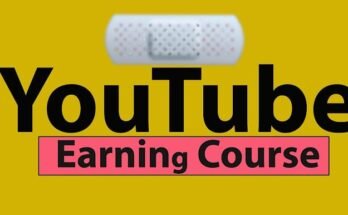Graphic design is an ever-evolving field that blends creativity with technology to communicate ideas visually. Whether you’re looking to start a new career, enhance your current job skills, or pursue a passion project, a graphic design course for beginners can be an excellent starting point. This guide aims to provide a comprehensive overview of what these courses entail, how they work, their features, pros and cons, alternatives, and some frequently asked questions to help you make an informed decision.
What is a Graphic Design Course for Beginners?
A graphic design course for beginners is an educational program tailored for individuals who have little to no experience in graphic design. These courses introduce foundational principles and tools used in the field, such as color theory, typography, layout design, and software proficiency in programs like Adobe Photoshop, Illustrator, and InDesign. The primary goal is to equip students with the skills and knowledge necessary to create visually appealing designs and to prepare them for more advanced study or entry-level jobs in graphic design.

How Graphic Design Course for Beginners Work
Graphic design courses for beginners typically offer a structured curriculum that balances theoretical knowledge with practical application. Here’s a breakdown of how these courses generally operate:
Course Structure
- Modules and Lessons: Courses are divided into modules, each focusing on a specific aspect of graphic design. Lessons within these modules cover both theory and practical exercises.
- Assignments and Projects: Students work on assignments and projects that reinforce the concepts taught. These tasks often involve creating actual design pieces, providing hands-on experience.
- Feedback and Evaluation: Instructors provide feedback on assignments and projects, helping students understand their strengths and areas for improvement.
- Interactive Sessions: Many courses offer live sessions or webinars where students can interact with instructors and peers, ask questions, and participate in discussions.
Learning Platforms
- Online Courses: These courses are typically hosted on e-learning platforms like Coursera, Udemy, or Skillshare. They offer flexibility, allowing students to learn at their own pace.
- Classroom Courses: Traditional classroom settings provide face-to-face interaction with instructors and peers, fostering a more collaborative learning environment.
- Hybrid Courses: These combine online and classroom elements, offering the best of both worlds.
Tools and Software
Students learn to use industry-standard tools such as:
- Adobe Photoshop: For photo editing and manipulation.
- Adobe Illustrator: For vector graphics and illustration.
- Adobe InDesign: For layout design, especially for print media.
Features of Graphic Design Course for Beginners
A good graphic design course for beginners should offer several key features to ensure a comprehensive learning experience. Here are the essential components to look for:
Comprehensive Curriculum
- Foundational Concepts: Courses should cover basic principles of design, including color theory, typography, layout, and composition.
- Software Proficiency: Training in essential software like Adobe Creative Suite (Photoshop, Illustrator, InDesign).
- Design Processes: Instruction on the design process from concept to completion, including brainstorming, sketching, and prototyping.
Experienced Instructors
Courses should be led by experienced professionals with a background in graphic design. Their expertise can provide valuable insights and practical knowledge.
Hands-on Projects
Practical assignments and projects are crucial for applying theoretical knowledge. Look for courses that include real-world projects, portfolio development, and opportunities to work on client briefs.
Peer Interaction and Community
Engaging with peers through discussion forums, group projects, and critique sessions can enhance learning and provide networking opportunities.
Flexible Learning Options
Courses should offer flexible schedules, allowing students to learn at their own pace. This is especially important for those balancing studies with other commitments.
Certification
Upon completion, a recognized certification can enhance your resume and demonstrate your proficiency to potential employers.
Pros of Graphic Design Course for Beginners
| Pros | Details |
|---|---|
| Foundational Knowledge | Provides a solid foundation in graphic design principles and practices. |
| Skill Development | Enhances proficiency in industry-standard software and tools. |
| Flexibility | Online courses offer flexible schedules, allowing learning at your own pace. |
| Experienced Instructors | Courses are often led by industry professionals who provide valuable insights. |
| Hands-on Experience | Includes practical assignments and projects to apply theoretical knowledge. |
| Networking Opportunities | Interaction with peers and instructors can lead to valuable networking opportunities. |
| Certification | Earning a certification can boost your resume and job prospects. |
Cons of Graphic Design Course for Beginners
| Cons | Details |
|---|---|
| Cost | Some courses can be expensive, especially those offered by reputable institutions. |
| Time Commitment | Requires a significant time investment to complete assignments and projects. |
| Technical Requirements | Access to a computer and design software can be costly and require technical know-how. |
| Variable Quality | The quality of courses can vary significantly between providers. |
| Limited Personal Interaction | Online courses may lack the personal interaction found in classroom settings. |
| Self-Motivation Needed | Online learning requires a high degree of self-discipline and motivation. |
| Update Frequency | Courses may not always be updated frequently to reflect the latest design trends and software updates. |
Graphic Design Course for Beginners Alternatives
| Alternative | Details | Pros | Cons |
|---|---|---|---|
| Self-Study | Learning through books, online tutorials, and free resources. | Cost-effective, flexible schedule. | Lack of structured learning, no certification. |
| Community College Courses | In-person classes at local colleges. | Affordable, personal interaction with instructors. | Fixed schedule, limited course variety. |
| Bootcamps | Intensive, short-term courses focused on skill-building. | Fast-paced learning, hands-on projects. | Expensive, high time commitment. |
| Mentorship Programs | One-on-one learning with an experienced designer. | Personalized feedback, flexible learning. | Can be costly, dependent on finding a good mentor. |
| Workshops | Short-term, focused training sessions. | Hands-on learning, specific skills focus. | Limited scope, not comprehensive. |
| Internships | On-the-job training in a professional environment. | Real-world experience, networking opportunities. | May be unpaid, time-consuming. |
Conclusion and Verdict on Graphic Design Course for Beginners
A graphic design course for beginners can be an excellent investment for those looking to enter the field of graphic design. It provides a structured learning path, hands-on experience, and valuable credentials that can enhance your career prospects. However, it’s essential to consider factors such as cost, time commitment, and the quality of the course before enrolling.
For those who prefer a more flexible or cost-effective approach, alternatives like self-study, community college courses, or mentorship programs can also be valuable. Ultimately, the best choice depends on your learning style, goals, and resources.
FAQs on Graphic Design Course for Beginners
Q: Do I need any prior experience to enroll in a graphic design course for beginners? A: No, these courses are designed for individuals with little to no prior experience in graphic design.
Q: What software will I need for a graphic design course? A: Most courses require access to Adobe Creative Suite, including Photoshop, Illustrator, and InDesign.
Q: How long does it take to complete a beginner’s graphic design course? A: The duration varies, but most courses can be completed in 3-6 months if studied part-time.
Q: Will I receive a certificate upon completion? A: Many courses offer a certificate upon completion, which can be beneficial for your resume.
Q: Can I learn graphic design online? A: Yes, there are many reputable online courses available that provide comprehensive training in graphic design.
Q: Are graphic design courses expensive? A: The cost varies widely, from free courses to several thousand dollars for more comprehensive programs.
Q: Is graphic design a good career choice? A: Yes, graphic design can be a rewarding career with opportunities in various industries, including advertising, marketing, web design, and more.
Q: What skills will I learn in a graphic design course for beginners? A: You’ll learn foundational design principles, software proficiency, layout design, typography, and how to create visual content for different media.
Q: Can I get a job after completing a beginner’s graphic design course? A: Completing a course can enhance your job prospects, especially if you also build a strong portfolio of your work.




